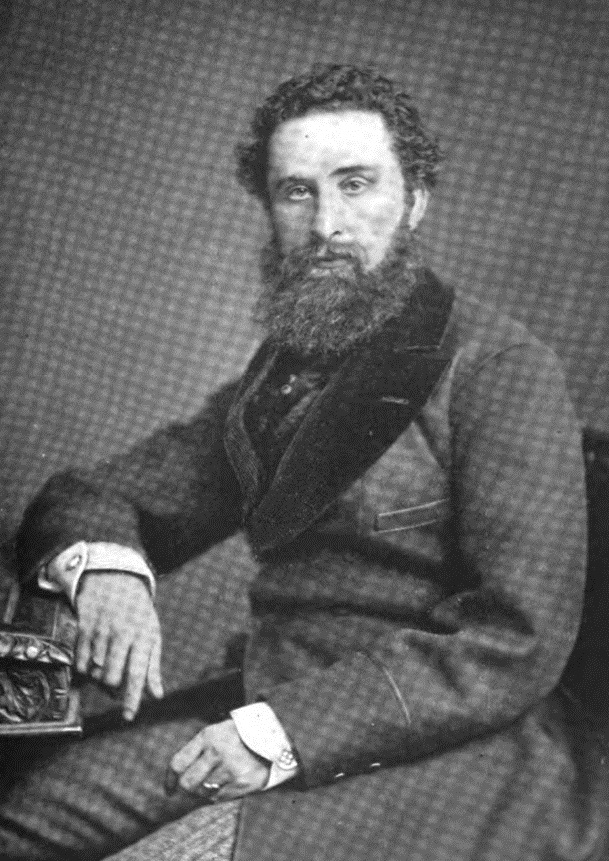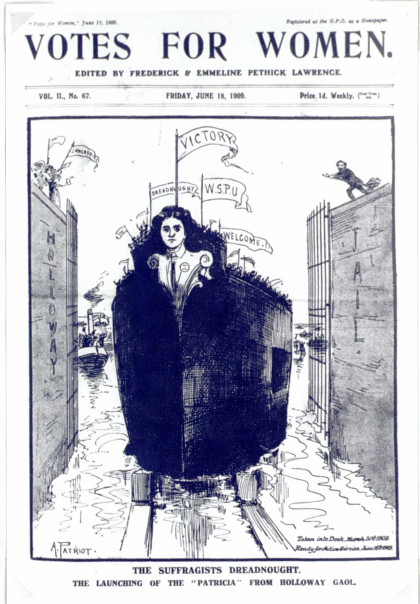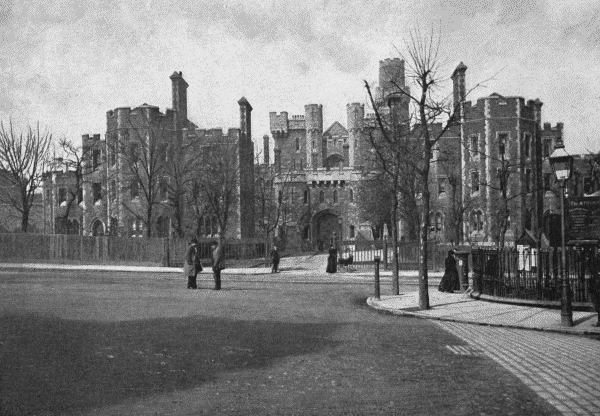|
Sarah Jane Baines
Sarah Jane Baines (30 November 1866 – 20 February 1951) was a British-Australian feminist, suffragette and social reformer. She was the first suffragette to be tried by jury, and one of the first hunger strikers. She was known as 'Jennie Baines' in the suffragist movement. Early life Sarah Jane Baines was born in Birmingham, England, in 1866 to Sarah Ann (''née'' Hunt) and James Edward Hunt, a gun maker. She began work at Joseph Chamberlain's ordnance factory aged eleven. At age fourteen, Sarah joined her parents in working with the Salvation Army. Upon attaining the rank of lieutenant, now aged twenty, she was sent to work as an evangelist in an independent working men's mission in Bolton. In this role, she was also called upon to act as a police court missionary caring for women who had been arrested. On 26 September 1888 in Bolton she married George Baines, a boot and shoemaker, and the couple had five children between 1888 and 1899 three of whom survived childho ... [...More Info...] [...Related Items...] OR: [Wikipedia] [Google] [Baidu] |
Suffragette
A suffragette was a member of an activist women's organisation in the early 20th century who, under the banner "Votes for Women", fought for the right to vote in public elections in the United Kingdom. The term refers in particular to members of the British Women's Social and Political Union (WSPU), a women-only movement founded in 1903 by Emmeline Pankhurst, which engaged in direct action and civil disobedience. In 1906, a reporter writing in the ''Daily Mail'' coined the term ''suffragette'' for the WSPU, derived from suffragist (any person advocating for voting rights), in order to belittle the women advocating women's suffrage. The militants embraced the new name, even adopting it for use as the title of the newspaper published by the WSPU. Women had won the right to vote in several countries by the end of the 19th century; in 1893, New Zealand became the first self-governing country to grant the vote to all women over the age of 21. When by 1903 women in Britain had ... [...More Info...] [...Related Items...] OR: [Wikipedia] [Google] [Baidu] |
Lucy Burns
Lucy Burns (July 28, 1879 – December 22, 1966) was an American suffragist and women's rights advocate.Bland, 1981 (p. 8) She was a passionate activist in the United States and the United Kingdom, who joined the militant suffragettes. Burns was a close friend of Alice Paul, and together they ultimately formed the National Woman's Party. Early life and education Burns was born in New York to an Irish Catholic family.Lunardini, 1986 (p. 14) She was described by fellow National Woman's Party member Inez Haynes Irwin as "a woman of twofold ability. She speaks and writes with equal eloquence and elegance. ..Mentally and emotionally, she is quick and warm. ..She has intellectuality of a high order; but she overruns with a winning Irishness which supplements that intellectuality with grace and charm; a social mobility of extreme sensitiveness and swiftness." She was a gifted student and first attended Packer Collegiate Institute, or what was originally known as the Brooklyn Fema ... [...More Info...] [...Related Items...] OR: [Wikipedia] [Google] [Baidu] |
Theatre Royal, Dublin
Over the centuries, there have been five theatres in Dublin called the Theatre Royal. In the history of the theatre in Great Britain and Ireland, the designation "Theatre Royal", or "Royal Theatre", once meant that a theatre had been granted a royal patent, without which "serious drama" theatrical performances were not permitted by law. Many such theatres had other names. The first Theatre Royal The first Theatre Royal was opened by John Ogilby in 1662 in Smock Alley. Ogilby, who was the first Irish Master of the Revels, had previously run the New Theatre in Werburgh Street. This was the first custom-built theatre in the city. It opened in 1637 but was closed by the Puritans in 1641. The Restoration of the monarchy in Ireland in 1661 enabled Ogilby to resume his position as Master of the Revels and open his new venture. This Theatre Royal was essentially under the control of the administration in Dublin Castle and staged mainly pro- Stuart works and Shakespearean classics. ... [...More Info...] [...Related Items...] OR: [Wikipedia] [Google] [Baidu] |
Lady Constance Bulwer-Lytton
Lady Constance Georgina Bulwer-Lytton (12 February 1869 – 2 May 1923), usually known as Constance Lytton, was an influential British suffragette activist, writer, speaker and campaigner for prison reform, votes for women, and birth control. She used the name Jane Warton to avoid receiving special treatment when imprisoned for suffragist protests. Although born and raised in the privileged ruling class of British society, Lytton rejected this background to join the Women's Social and Political Union (WSPU), the most militant group of suffragette activists campaigning for "Votes for Women". [...More Info...] [...Related Items...] OR: [Wikipedia] [Google] [Baidu] |
Patricia Woodlock
Patricia Woodlock (born Mary Winifred Woodlock; 25 October 1873 – after 1930) was a British artist and suffragette who was imprisoned seven times, including serving the longest suffragette prison sentence in 1908 (solitary confinement for three months); she was awarded a Women's Social and Political Union (WSPU) Hunger Strike Medal ''for Valour''. Her harsh sentence caused outrage among supporters and inspired others to join the protests. Her release was celebrated in Liverpool and London and drawn as a dreadnought warship, on the cover of the WSPU ''Votes for Women'' newsletter. Early life She was born Mary Winifred Woodlock in 1873 to an Irish socialist father David Woodlock, originally from Tipperary, who was also an artist, and his wife, Mary Teresa ( Martin). Known as "Patricia", she had three younger siblings: a decade younger sister, Evangeline; an eight years younger brother, Charles; and a two years younger brother, David Sarsfield Woodlock. Charles Woodlock report ... [...More Info...] [...Related Items...] OR: [Wikipedia] [Google] [Baidu] |
Ada Flatman
Ada Susan Flatman (1876–1952) was a British suffragette who worked in the United Kingdom and the United States. Life Ada Susan Flatman was born in Suffolk in 1876. She was of independent means and became interested in women's rights. She lived in the same Twentieth Century Club Notting Hill rooms as fellow activist Jessie Stephenson. Flatman was sent to Holloway Prison, after she took part in the raid on the Houses of Parliament in 1908, led by Marion Wallace Dunlop, Ada Wright, and Katherine Douglas Smith, and a second wave by Una Dugdale. The following year she was employed by the Women's Social and Political Union (WSPU) to organise their activities in Liverpool taking over from Mary Phillips. Flatman arranged humble lodgings for Constance Lytton when she came to Liverpool disguised as a working woman, aiming to get arrested for suffragette activism to created suitable publicity. In May 1909, Flatman was in Bristol, and evaded detectives assigned to follow her – and ma ... [...More Info...] [...Related Items...] OR: [Wikipedia] [Google] [Baidu] |
HM Prison Holloway
HM Prison Holloway was a closed category prison for adult women and young offenders in Holloway, London, England, operated by His Majesty's Prison Service. It was the largest women's prison in western Europe, until its closure in 2016. History Holloway prison was opened in 1852 as a mixed-sex prison, but due to growing demand for space for female prisoners, particularly due to the closure of Newgate, it became female-only in 1903. Before the first world war, Holloway was used to imprison those suffragettes who broke the law. These included Emmeline Pankhurst, Emily Davison, Constance Markievicz (also imprisoned for her part in the Irish Rebellion), Charlotte Despard, Mary Richardson, Dora Montefiore, Hanna Sheehy-Skeffington, and Ethel Smyth. In 1959, Joanna Kelley became Governor of Holloway. Kelley ensured that long-term prisoners received the best accommodation and they were allowed to have their own crockery, pictures and curtains. The prison created "family" groups ... [...More Info...] [...Related Items...] OR: [Wikipedia] [Google] [Baidu] |
Sylvia Pankhurst
Estelle Sylvia Pankhurst (5 May 1882 – 27 September 1960) was a campaigning English feminist and socialist. Committed to organising working-class women in London's East End, and unwilling in 1914 to enter into a wartime political truce with the government, she broke with the suffragette leadership of her mother and sister, Emmeline and Christabel Pankhurst. She was inspired by the Russian Revolution and consulted with Lenin, but defied Moscow in endorsing a syndicalist programme of workers' control and by criticising the emerging Soviet dictatorship. Pankhurst was vocal in her support for Irish independence; for anti-colonial struggle throughout the British Empire; and for anti- fascist solidarity in Europe. Following the Italian invasion in 1935, she was devoted to the cause of Ethiopia where, after the Second World War, she spent her remaining years as a guest of the restored emperor Haile Selassie. The international circulation of her pan-Africanist weekly ''The New Tim ... [...More Info...] [...Related Items...] OR: [Wikipedia] [Google] [Baidu] |
Workers' Socialist Federation
The Workers' Socialist Federation was a socialist political party in the United Kingdom, led by Sylvia Pankhurst. Under many different names, it gradually broadened its politics from a focus on women's suffrage to eventually become a left communist grouping. East London Federation of the WSPU It originated as the East London Federation of the Women's Social and Political Union (WSPU, better known as the Suffragettes). The East London Federation was founded by Dr Richard Pankhurst and his wife Emmeline Pankhurst in 1893,Elizabeth Crawford, ‘Bull , Amy Maud (1877–1953)’, Oxford Dictionary of National Biography, Oxford University Press, 200accessed 1 January 2017/ref> and differed from its parent organisation in being democratic and including men, such as George Lansbury. By this point, Sylvia had many disagreements with the route the WSPU was taking. She wanted an explicitly socialist organisation tackling wider issues than women's suffrage, aligned with the Independent ... [...More Info...] [...Related Items...] OR: [Wikipedia] [Google] [Baidu] |
Annie Barnes (suffragist)
Annie Barnes (née Cappuccio; 6 December 1886 – 22 February 1982) was a British-Italian socialist and suffragist. Life and suffragist action Barnes was born in Limehouse 6 October 1886. She was born Annie Cappuccio and her father had a confectionery, fruit and vegetable shop. In her autobiography ''Tough Annie'' she did not mention her Italian roots, but recalled her mother helping their particularly poor neighbours, employing widows or others to help in the house: "Mother always believed in treating everyone the same, as equals..That's how I was brought up." Barnes saw the crowd of suffragette protestors in July 1909, outside Edinburgh Castle Hall in Limehouse, including Mary Leigh, Mabel Capper, and Jennie Baines trying to enter the Lloyd George event. She said it was a "real to-do" including police falling head first off a horse into water trough to the crowd's amusement and then a woman in a wheelchair, possibly Rosa May Billinghurst, (who had been touching the horse) ta ... [...More Info...] [...Related Items...] OR: [Wikipedia] [Google] [Baidu] |
Limehouse
Limehouse is a district in the London Borough of Tower Hamlets in East London. It is east of Charing Cross, on the northern bank of the River Thames. Its proximity to the river has given it a strong maritime character, which it retains through its riverside public houses and steps, such as The Grapes and Limehouse Stairs. It is part of the traditional county of Middlesex. It became part of the ceremonial County of London following the passing of the Local Government Act 1888, and then part of Greater London in 1965. It is located between Stepney to the west and north, Mile End and Bow to the northwest, Poplar to the east, and Canary Wharf and Millwall to the south, and stretches from the end of Cable Street and Butcher Row in the west to Stainsby Road near Bartlett Park in the east, and from West India Dock (South Dock) and the River Thames in the south to Salmon Lane and Rhodeswell Road in the north. The area gives its name to Limehouse Reach, a section of the Thames wh ... [...More Info...] [...Related Items...] OR: [Wikipedia] [Google] [Baidu] |
David Lloyd George
David Lloyd George, 1st Earl Lloyd-George of Dwyfor, (17 January 1863 – 26 March 1945) was Prime Minister of the United Kingdom from 1916 to 1922. He was a Liberal Party politician from Wales, known for leading the United Kingdom during the First World War, social reform policies including the National Insurance Act 1911, his role in the Paris Peace Conference, and negotiating the establishment of the Irish Free State. Early in his career, he was known for the disestablishment of the Church of England in Wales and support of Welsh devolution. He was the last Liberal Party prime minister; the party fell into third party status shortly after the end of his premiership. Lloyd George was born on 17 January 1863 in Chorlton-on-Medlock, Manchester, to Welsh parents. From around three months of age he was raised in Pembrokeshire and Llanystumdwy, Caernarfonshire, speaking Welsh. His father, a schoolmaster, died in 1864, and David was raised by his mother and her shoemaker brot ... [...More Info...] [...Related Items...] OR: [Wikipedia] [Google] [Baidu] |

.jpeg)







